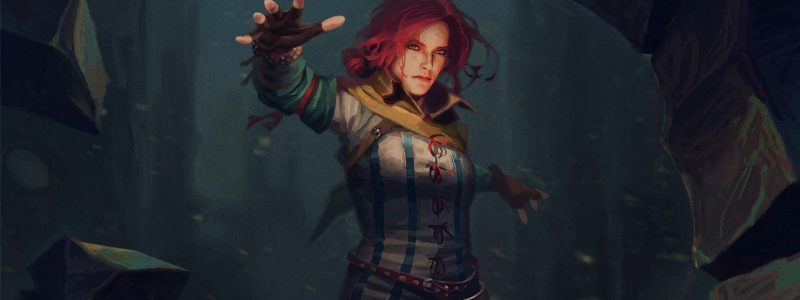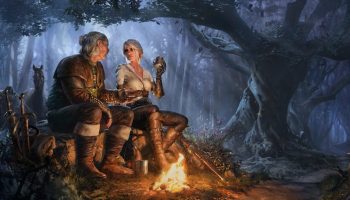Today we continue our journey through various faiths and beliefs across the Northern Realms and the Empire. If you haven't seen part 1, . That would be it for the introduction, let's dive into it.
Kreve – not much is known about this deity, but it's pretty popular within the League of Hengfors, especially Hołopole, where there is a large temple dedicated to it. The priests of Kreve like to convert other people to their faith. A bit of trivia – where Kozojed, a shoemaker from Hołopole came up with the ideo of stuffing a sheep with sulfur to bait and ultimately kill a dragon (Myrgtabrakke), a certain Kreve priest conducted prayers over it to make sure it would work. A little digression, the first part of it (a shoemaker stuffing sheep with sulfur to defeat a dragon) is a reference to a Polish legend about a shoemaker named Dratewka, who did the same, but unlike Kozojed succeded.
Melitele – a godess that is presented in three forms – a young girl, a mother and an old woman. She is a symbol of nature, fertility, wisdom and tolerance. Only women can be Melitele's priests, and within the priestess there is no celibate (but Nenneke still doesn't want any of the novices around Jarre). The most famous temple of Melitele is in Ellander, Temeria and its high priestess is Nenneke. That temple provides education to childeren (either sent there by their parents like Melfi or taken in like Jarre). The novices learn medicine and often end up in field hospitals during battles (like the girls that were noivices when Ciri was in the temple).
Freyja – this is a version of Melitele adapted by the people of Skellige. Her main temple is on Hindarsfjall and the high priestess is Sigdrifa. Yennefer went to that temple to obtain a stone she needed for her megascope. The stone, Brisingamen belonged to Freyja's statue in that temple. Yen wanted to force it out, but Sigdrifa helped her get the godess' blessing and the statue just geve her the stone. Besides the godess, Skelligian people worship their legendary heroes – Hemdall and his sons that are believed to start the clans that rule the islands – Tyr – Tuirseach, Otkell – Heymaey, Broddr – Dimun, Grymmdjar – an Craite, Modolf – Drummond and Sove – Brokvar. They olso believe that when the time comes, a golden rooster, Kambi will alert Hemdall about Ragh nar Roogh, the final battle between the good and the evil that will precede the end of the world (Tedd Deireadh). They incorporated the Wild Hunt into this myth, believing that they are the forces of evil and they will come on a drakkar made out of dead man's nails – Naglfaar.
The Cult of the Lionhead Spider (Kult Lwiogłowego Pająka)/Coram Agh Tera – a cult based on a deity imagined as a spider with lion's head which is a god of death. It's followers specialise in occultism and curses. Nivellen once raided the temple of that cult and one of its priestesses cursed him, he became an animal-like anthropomorphic monster and the thing which lifted this curse was the death of his loved one, Vereena. He describes that temple as "evil", says that it had bones and skulls on the altar, a green fire burned and there was an omnipresent stench. In the first videogame, Abigail, the witch from Wyzima's suburbs is a priestess of Coram Agh Tera. The cult became illegal in Temeria due to bloody sacrifices.
The Cult of the Great Sun (Kult Wielkiego Słońca) – the official religion of Nilfgaard. Its deity is the sun, which can be understood both literally (a sun that enables all of life to exist) or figuratively (the Empire, which has a sun as its symbol). Not much is known about it (only the paper RPG "Gra Wyobraźni" elaborates on it). The emperor is also believed to be a god-like figure (like in the Roman Empire) and is a high priest of the religion.
Source: https://www.reddit.com/r/gwent/comments/puog4k/religions_of_the_witcher_2_weekend_lore_ramblings/







